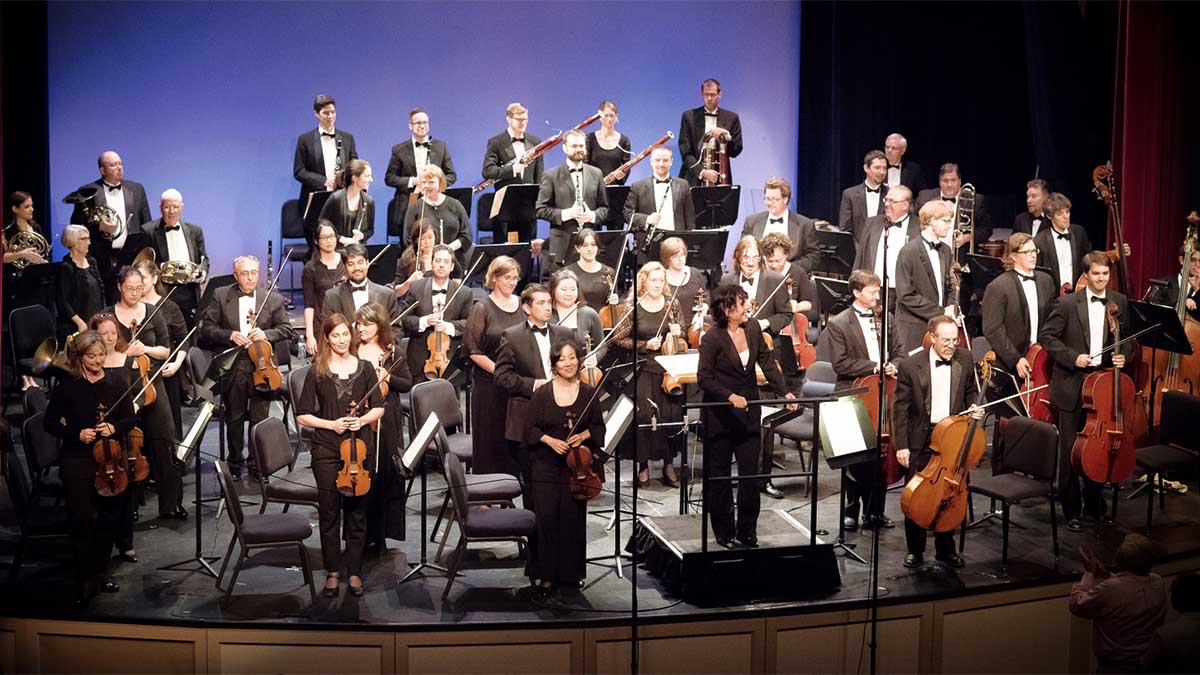On February 26 and 27, the Williamsburg Symphony Orchestra performed music written and inspired by Baroque composer François Couperin at the Kimball Theatre in Colonial Williamsburg.
The Couperins were one of the most famous musical families in Europe during the 17th and 18th centuries. François, who was referred to as “Couperin the Great,” began his musical career as the organist at Church Saint-Gervais in Paris, a position he inherited from his father. Most of Couperin’s compositions were for keyboard and chamber groups.
Music Director and Conductor Janna Hymes was vibrant and personable when explaining her choices for the evening’s program, which began with one of Couperin’s most famous harpsichord pieces, The Mysterious Barricades, performed by local musician Beckie Davy. The stage was then reset for the orchestra. Although the Couperin piece offered an interesting preview to the more majestic, orchestral homages to follow, its effects were blunted by a long and awkward stage transition.
The two Couperin and Baroque-inspired works on the programwere Three Studies from Couperin by contemporary British composer Thomas Adès, and Le Tombeau de Couperin by famed French Impressionist composer Maurice Ravel.The flutes ofthe Williamsburg Symphony Orchestra (Jennifer Debiec Lawson and Amy Casper) were stunning in their spotlight during Three Studies from Couperin. However, the orchestra seemed under-rehearsed during this portion of the program, possibly because it was a new piece for the WSO. Although the later movements sounded more together, WSO’s performance as a whole was lacking and met with lukewarm applause.
The Williamsburg Symphony Orchestra improved dramatically for Le Tombeau de Couperin by Ravel. Hymes noted the group had performed the piece before.Shawn Welk played the famous oboe solo from the first movement with accuracy and a beautiful, shimmering sound, while the third movement’s whimsical themes elicited rapture from the audience.
The second half of the program featured Haydn’s Symphony No. 101 in D Major, “The Clock.” Following the first hour’s carefully curated program, this work by Haydn felt random. It would have been enlightening to hear Hymes recount why this particular piece was chosen. Nevertheless, the orchestra was in top form and the audience clearly enjoyed hearing a more familiar composer close out the evening.
Despite under-rehearsed moments, WSO’s program was ambitious, unique, and refreshing. Several soloists, most notably principal flutist Jennifer Debiec Lawson, demonstrated technical prowess and spark. Moreover, Hymes’s fluid conducting and passionate introductions made the evening every bit as relevant, interesting, and accessible as classical music ought to be.
Next up for the Williamsburg Symphony Orchestra is Ady’s American Adventure, playing at the Williamsburg Community Chapel on March 4. Visit williamsburgsymphony.org for tickets and more information.

